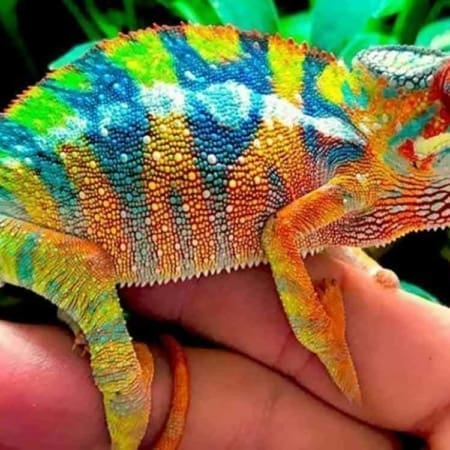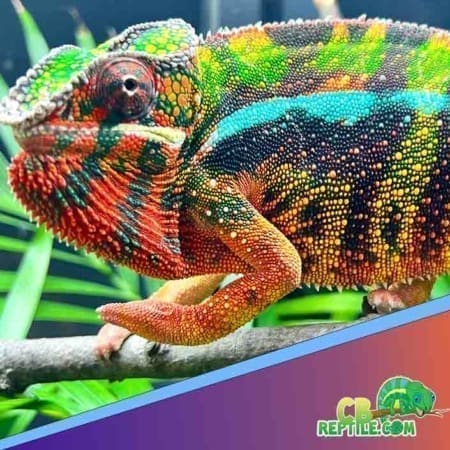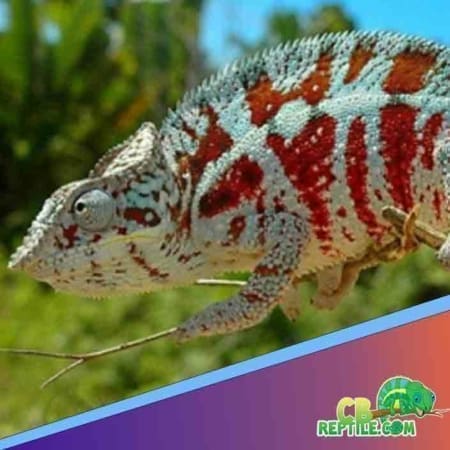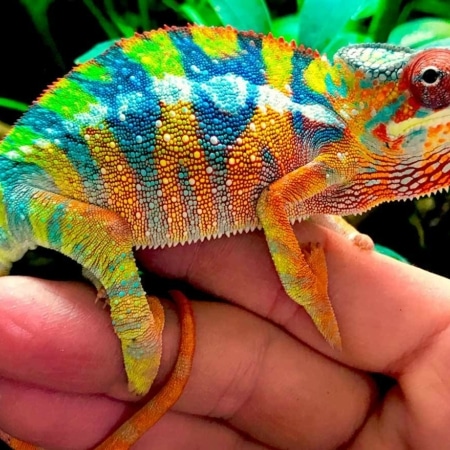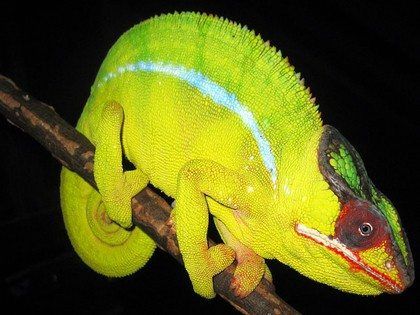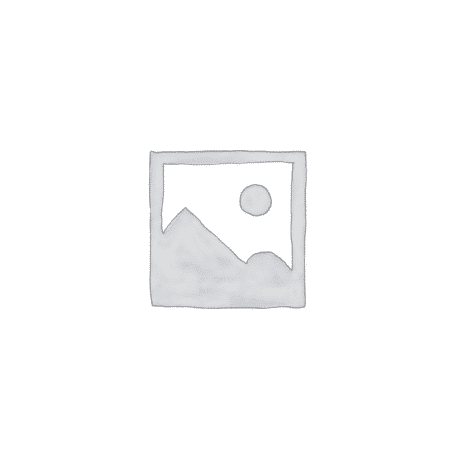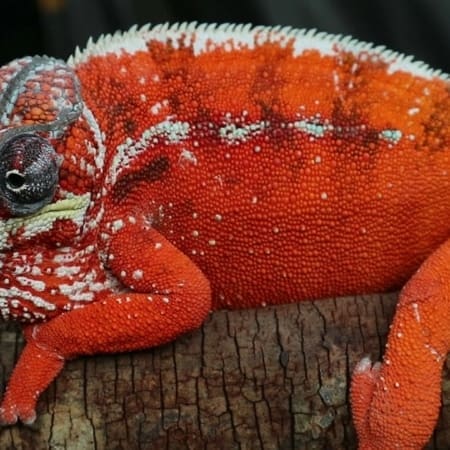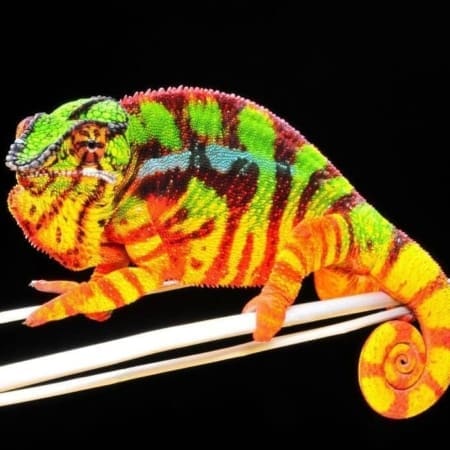Feeding Your Panther Chameleon: The Best Insects and Nutrition Guide
Few reptiles capture hearts quite like the Panther chameleon. With their dazzling colors, curious personalities, and mesmerizing way of moving, they are truly living works of art. Raising one successfully means not only providing the right habitat but also feeding them the right diet. Nutrition is the cornerstone of health for any reptile, and for a Panther chameleon, it can make the difference between a shy, stressed pet and a vibrant, thriving companion.
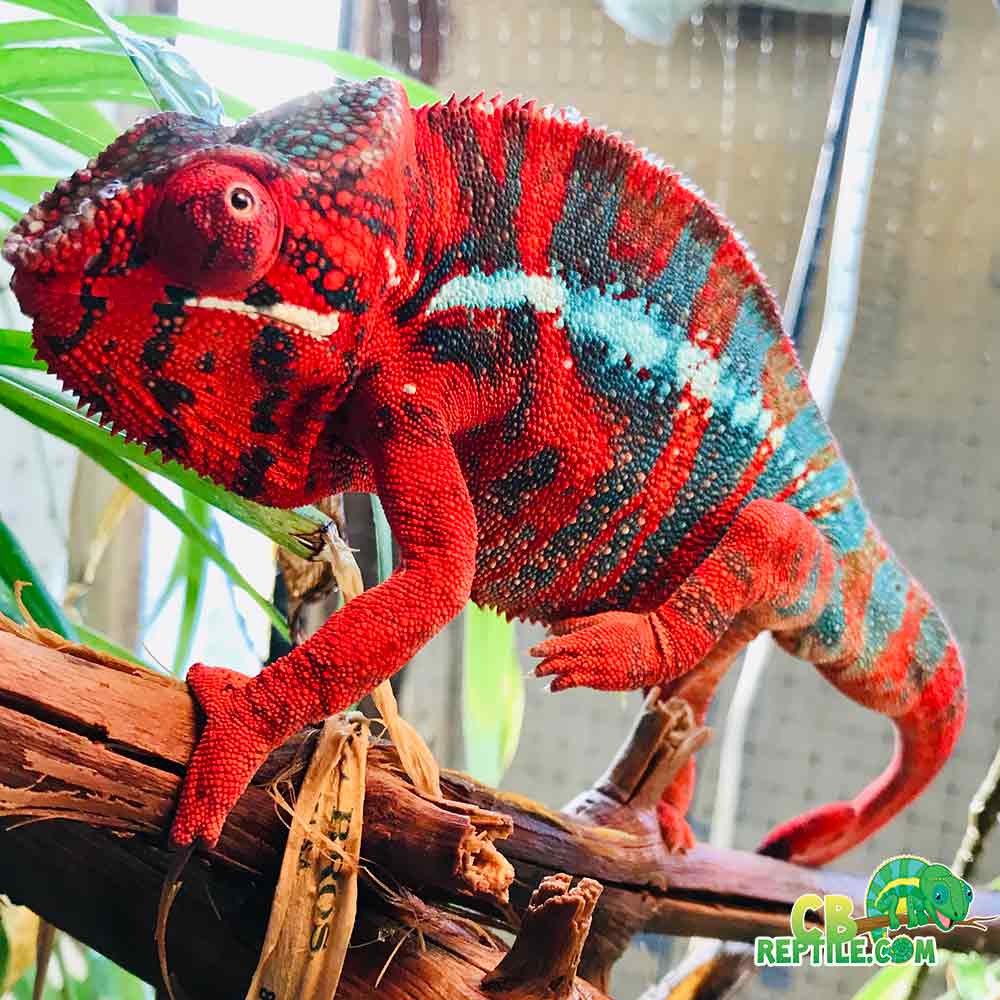
If you’ve chosen an Ambilobe Panther chameleon, you already know how spectacular these animals can be. Their bold reds, blues, and greens make them one of the most sought-after locales in the chameleon-keeping community. And when it comes to finding healthy, hand-raised Ambilobe Panther chameleons, there’s one name that keepers across the country celebrate: CB Reptile, a top panther chameleon breeder in the United States. For over a decade, CB Reptile has been raising strong, colorful chameleons with the best care and genetics—ensuring keepers get off to a happy start.
In this guide, we’ll cover the best feeder insects for your pet Panther chameleon, how to prepare and supplement them, and how to keep mealtimes nutritious and fun.
The Importance of a Varied Diet
Panther chameleons are insectivores, which means their diet should be made up almost entirely of insects. In the wild, they hunt a wide variety of bugs: crickets, flies, beetles, roaches, and even the occasional caterpillar. Offering a diverse diet in captivity is important because no single feeder insect provides every nutrient your chameleon needs.
Variety also keeps your chameleon mentally stimulated. Watching their turret eyes lock onto a cricket, then seeing that lightning-fast tongue strike never gets old. By rotating feeders, you’ll encourage natural hunting behaviors and keep your chameleon happy and engaged.
Staple Feeder Insects
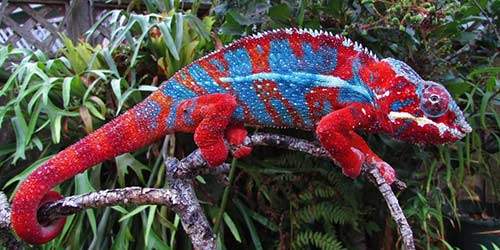
These insects should form the backbone of your Panther chameleon’s diet:
Crickets
-
Affordable, easy to find, and well-accepted.
-
Should be gut-loaded (fed nutritious greens and veggies) before being offered.
-
Offer in appropriate sizes—no larger than the width of your chameleon’s head.
Dubia Roaches
-
Nutritious, high in protein, and lower in chitin than crickets, making them easier to digest.
-
Long-lived and odorless, they’re easy to keep at home.
-
A fantastic staple alongside crickets.
Silkworms
-
Soft-bodied and rich in calcium.
-
Great for hydration since they contain a lot of moisture.
-
A healthy staple you can use several times a week.
Locusts (where available)
-
Nutritious and loved by chameleons.
-
Offer variety and stimulate natural hunting behavior.
Treat and Rotation Feeders

These feeders are excellent in moderation but shouldn’t make up the bulk of the diet.
Hornworms
-
Large, colorful worms that provide hydration and enrichment.
-
Very high in water content—perfect for hot days or picky eaters.
-
Use as a treat, not a staple, since they’re lower in protein.
Butterworms
-
High in calcium and fat.
-
Excellent as an occasional supplement for picky eaters.
Superworms and Mealworms
-
Chameleons love them, but they’re higher in fat and have tougher exoskeletons.
-
Best offered sparingly to avoid digestive issues.
Black Soldier Fly Larvae (Phoenix Worms)
-
Naturally high in calcium.
-
Can be offered as a regular supplement to boost calcium intake.
Gut-Loading: Feeding the Feeders
One of the most important but often overlooked aspects of chameleon nutrition is gut-loading. This means feeding your insects a highly nutritious diet before offering them to your chameleon. When your pet eats the insect, it also consumes all the good nutrients inside it.
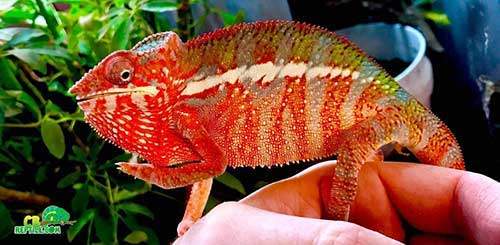
Gut-Load Staples
-
Dark, leafy greens (collard greens, mustard greens, dandelion greens).
-
Fresh vegetables (carrots, squash, sweet potato, zucchini).
-
Small amounts of fruit (apple, orange, papaya) for added variety.
Commercial gut-loading diets are also available, but fresh produce should be the core. Aim to feed your insects well for at least 24–48 hours before they’re given to your chameleon.
Supplements: Calcium and Vitamins
Even with a varied diet, supplementation is essential to prevent deficiencies.
-
Calcium without D3: Lightly dust feeders at most meals. This helps maintain strong bones and healthy growth.
-
Calcium with D3: Use once or twice a month if your chameleon has strong UVB lighting. If UVB exposure is limited, you may need to use it more often—but never overdo it.
-
Multivitamins: Use once every week or two. These provide trace nutrients missing from insects.
Always dust lightly. Too much powder can make feeders unappetizing. The goal is a fine coating, not a thick layer.
Feeding Schedule by Age
-
Juveniles (under 9 months): Feed daily with a variety of small insects. Juveniles grow quickly and need consistent nutrition.
-
Subadults and adults: Feed every other day. Offer a mix of 6–8 medium insects per feeding.
-
Hydration: Mist the enclosure twice daily and provide a drip system. Chameleons rarely drink from standing water; they prefer to lap droplets from leaves.
Tips for Happy Feeding
-
Use a feeding cup or free-range method. Feeding cups prevent insects from hiding, but free-ranging crickets encourage natural hunting. A mix of both works well.
-
Offer insects in the morning. This gives your chameleon the day to digest with proper basking light.
-
Observe preferences. Every chameleon is an individual—some love roaches, others prefer silkworms. Rotate feeders to keep them excited.
-
Watch body condition. A healthy Panther chameleon should be well-rounded but not overweight. Adjust feeding accordingly.
Why Starting With the Right Breeder Matters
A chameleon’s health starts long before it comes to you. A responsible breeder ensures babies are eating well, properly hydrated, and accustomed to handling. That’s why choosing a breeder with a strong reputation is essential.
CB Reptile has been producing healthy, strong, and colorful Panther chameleons—including the spectacular Ambilobe locale—for over a decade. As one of the most trusted breeders in the United States, they’re known not just for quality animals but also for offering customer support and care guidance long after your chameleon arrives. Beginning your journey with a healthy, well-started chameleon from CB Reptile gives you the confidence to focus on what matters most—enjoying your new pet.
Final Thoughts
Feeding your Panther chameleon isn’t just about keeping them alive—it’s about helping them thrive. A happy, healthy chameleon needs:
-
A varied diet of staple insects like crickets, roaches, and silkworms.
-
Occasional treats like hornworms and butterworms for enrichment.
-
Proper gut-loading to boost nutrition.
-
Consistent calcium and vitamin supplements.
-
A feeding routine that matches their age and growth stage.
By combining variety, supplementation, and hydration, you’ll provide everything your Ambilobe Panther chameleon needs to live a vibrant, colorful, and healthy life.
And remember, success starts with a strong foundation. By choosing a juvenile or baby from a top breeder like CB Reptile, you’re setting yourself—and your chameleon—up for years of joy and companionship.

